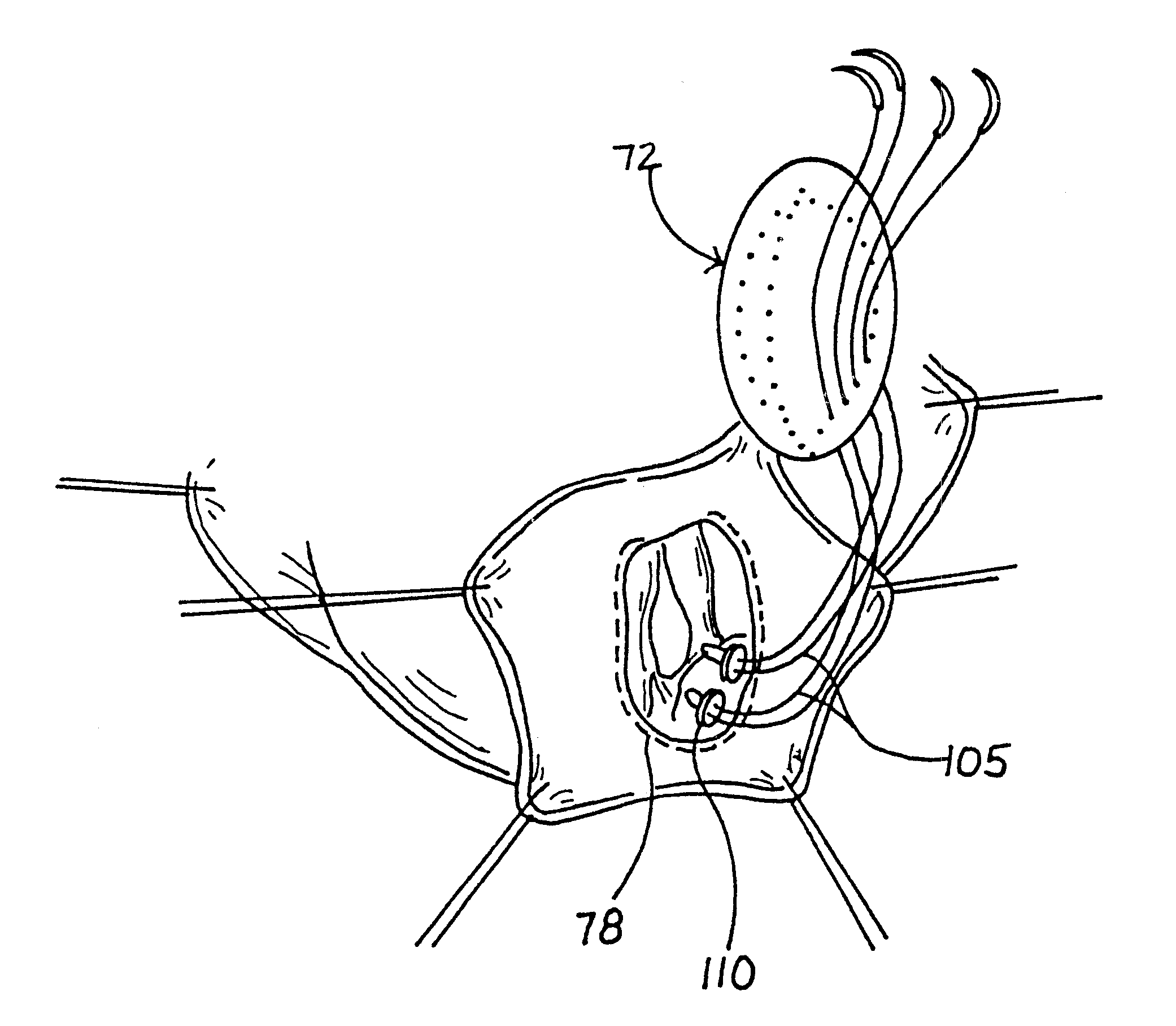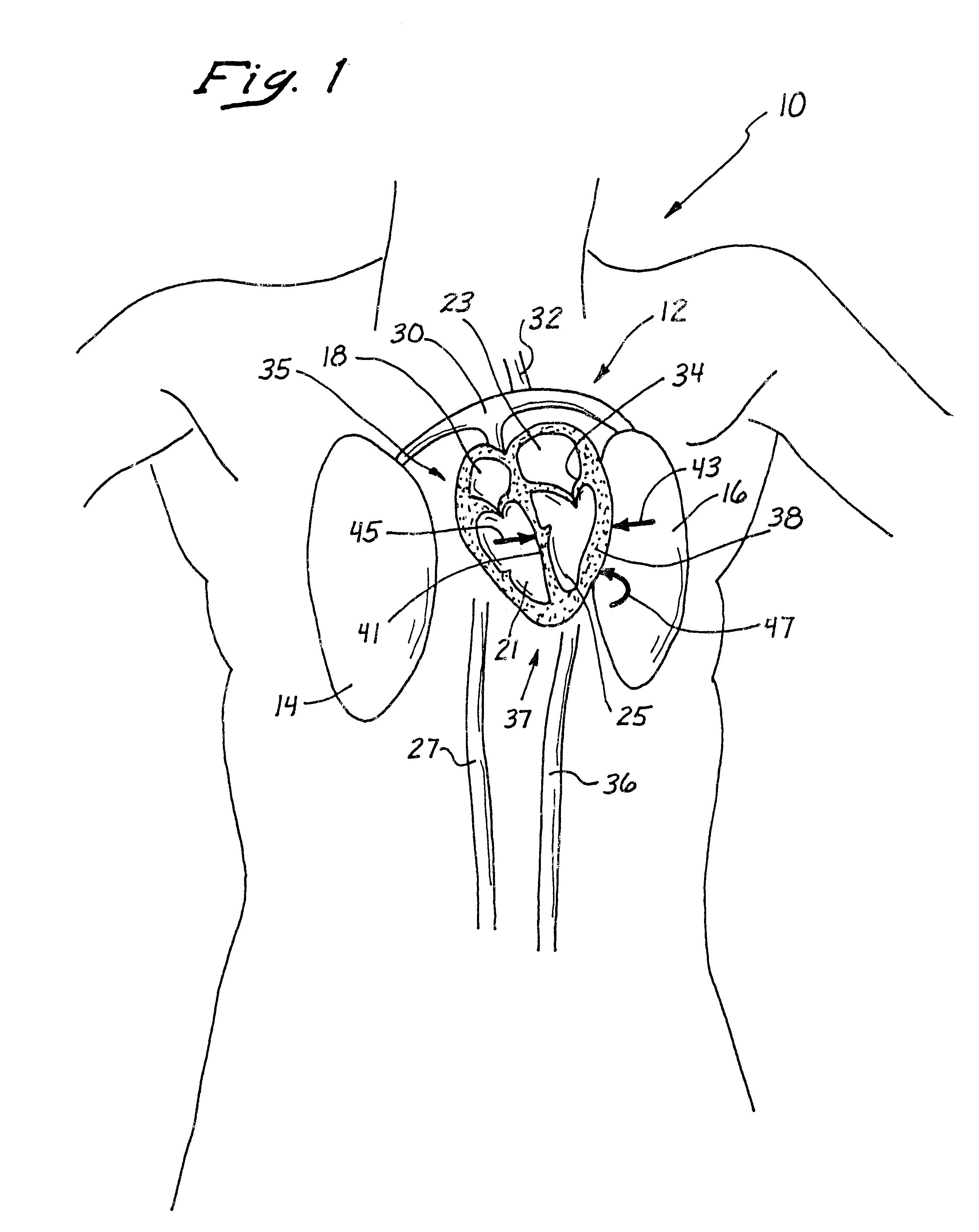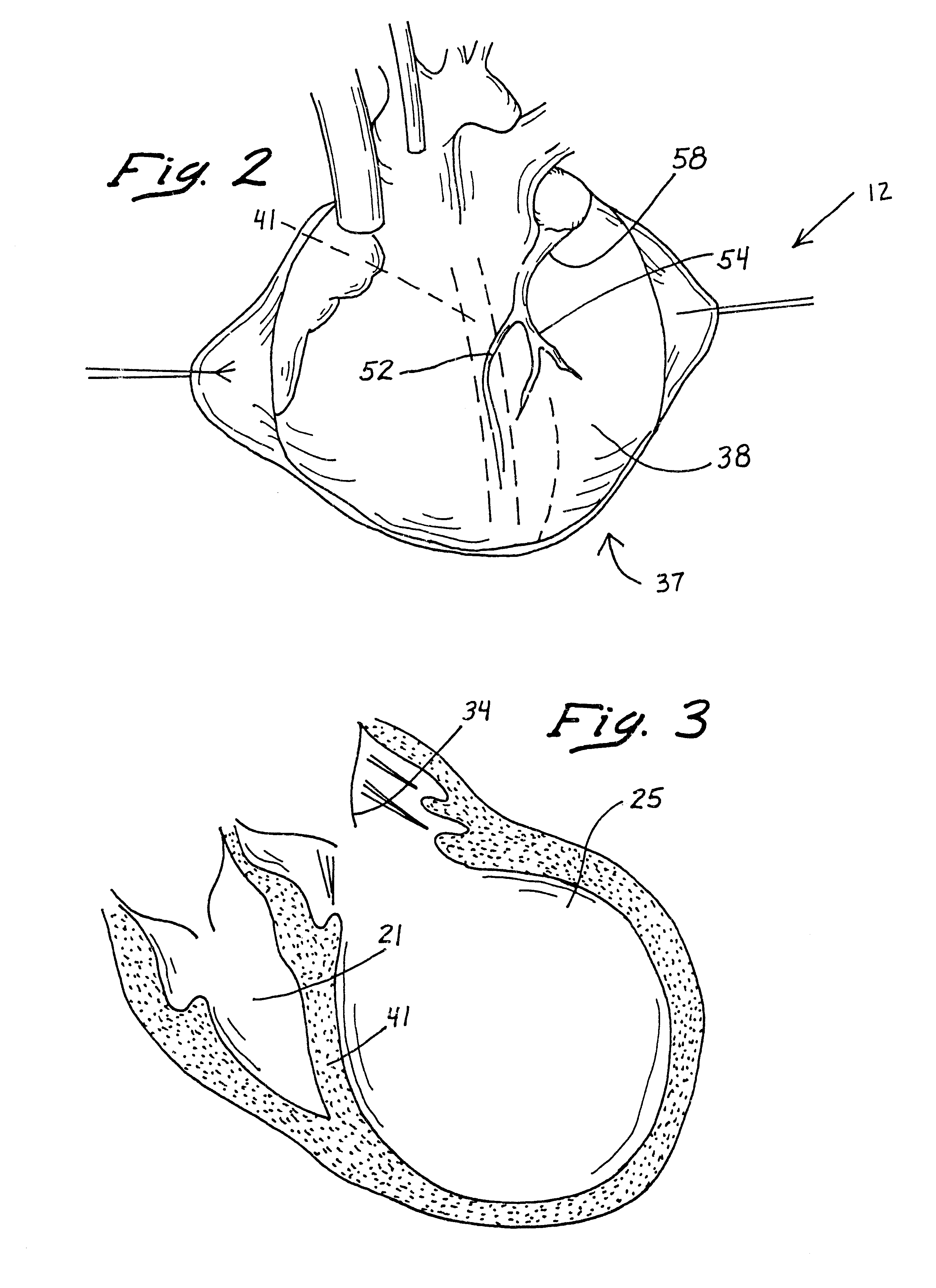Anterior segment coronary restoration apparatus and method
a technology for anterior segment coronary artery and restoration apparatus, which is applied in the field of surgical methods and apparatus for addressing ischemic cardiomyopathy, can solve the problems of reducing the ability of the heart to participate, let alone aid, in the cardiac pumping function, and requiring an increase in the output of blood from the heart,
- Summary
- Abstract
- Description
- Claims
- Application Information
AI Technical Summary
Benefits of technology
Problems solved by technology
Method used
Image
Examples
Embodiment Construction
Abdominal portions of the human body are illustrated in FIG. 1 and designated by the reference numeral 10. The body 10 is merely representative of any mammalian body having a heart 12 which pumps blood containing nutrients and oxygen, to vitalize tissue in all areas of the body 10. Other organs of particular importance to this blood circulation process include the lungs 14 and 16, and the vasculature of the body 10 including arteries which carry blood away from the heart 12 and veins which return blood to the heart 12.
The heart 12 typically includes four chambers, a right auricle 18, a right ventricle 21, a left auricle 23 and a left ventricle 25. In general, the auricles 18 and 23 are receiving chambers and the ventricles 21 and 25 are pumping chambers. Each of these chambers 18-25 is associated with a respective function of the heart 12. For example, it is the purpose of the right auricle 18 to receive the deoxygenated blood returning in the veins of the body 10, such as the femor...
PUM
 Login to View More
Login to View More Abstract
Description
Claims
Application Information
 Login to View More
Login to View More - R&D
- Intellectual Property
- Life Sciences
- Materials
- Tech Scout
- Unparalleled Data Quality
- Higher Quality Content
- 60% Fewer Hallucinations
Browse by: Latest US Patents, China's latest patents, Technical Efficacy Thesaurus, Application Domain, Technology Topic, Popular Technical Reports.
© 2025 PatSnap. All rights reserved.Legal|Privacy policy|Modern Slavery Act Transparency Statement|Sitemap|About US| Contact US: help@patsnap.com



